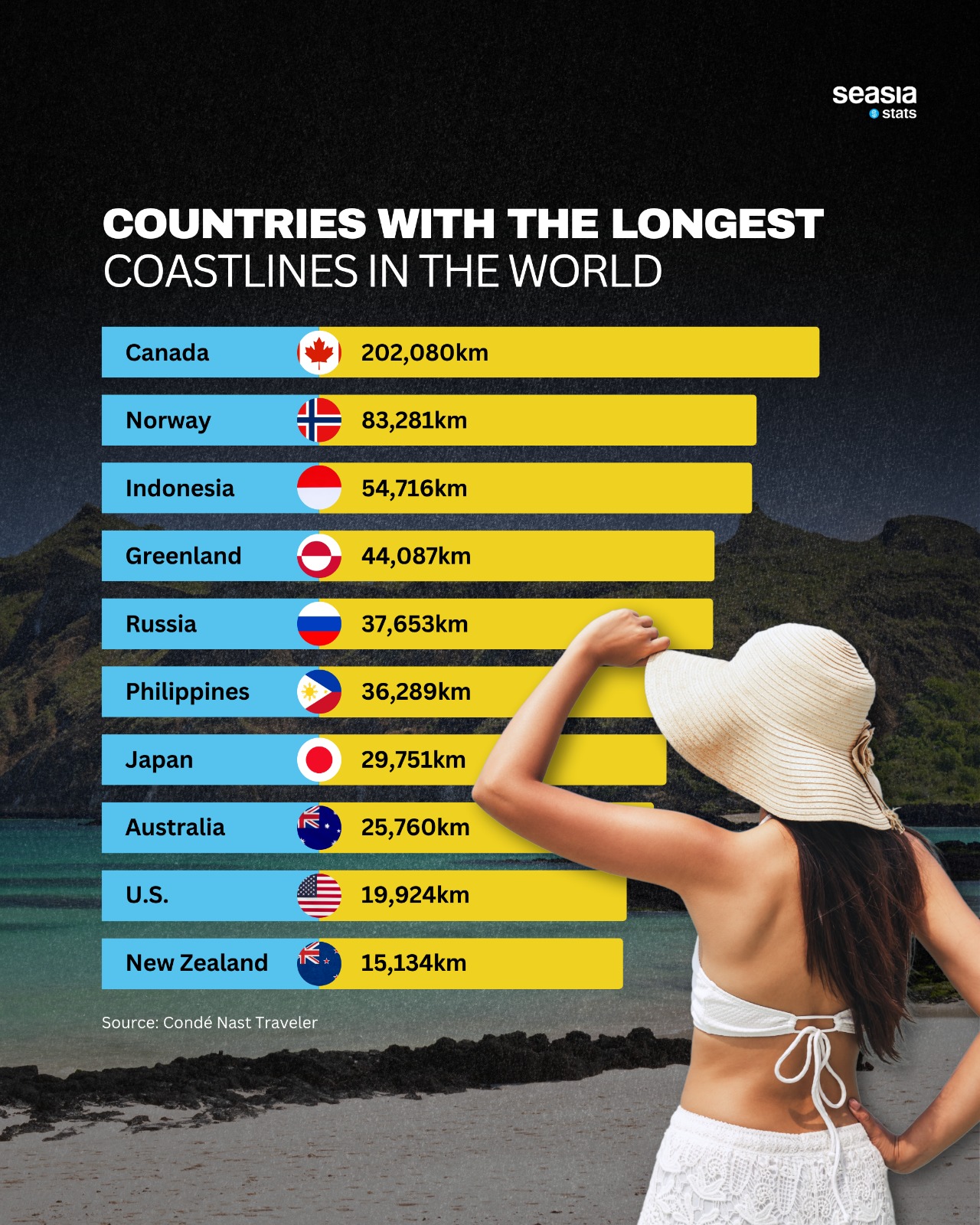With over 70 percent of our planet covered in water, a nation's coastline is more than just a geographical feature. It defines ecosystems, livelihoods, culture, and even national identity.
According to the World Resources Institute (WRI), which used consistent measurements based on the World Vector Shoreline database, two Southeast Asian countries stand out in the global ranking of the world’s longest coastlines: Indonesia and the Philippines.

A Coastal Powerhouse in the Tropics
Indonesia ranks third in the world with approximately 54,716 kilometers of coastline. This vast length is the result of its geography, an archipelago of more than 17,000 islands straddling the equator, stretching from the Indian Ocean to the Pacific.
Indonesia’s coastline is home to mangroves, coral reefs, and coastal communities that have thrived for centuries on fishing and maritime trade. Places like Raja Ampat, the Sunda Strait, and the Lesser Sunda Islands are not only biodiversity hotspots but also pillars of cultural heritage.
But maintaining such a vast maritime domain is no small feat. Coastal erosion, overfishing, plastic pollution, and rising sea levels pose growing challenges to the sustainability of Indonesia’s shorelines. Despite that, Indonesia continues to push for integrated coastal management, marine ecotourism, and stronger marine law enforcement to protect its maritime assets.
The Philippines: A Close Contender with Island Charm
Just behind Indonesia is the Philippines, ranked sixth globally with a coastline stretching about 36,289 kilometers. With over 7,600 islands, the country is a patchwork of coastal provinces, each with its own flavor of seascape, turquoise bays in Palawan, volcanic shores in Bicol, and bustling harbors like Cebu and Manila.
What sets the Philippines apart is how deeply the sea is embedded in its culture. From coastal festivals to traditional boat-building, maritime life is central to Filipino identity. Its coral triangle location also makes it one of the richest marine biodiversity zones in the world.
However, the archipelago’s fragmented geography also makes it vulnerable. Typhoons frequently batter its shores, and rising sea levels increasingly threaten coastal towns. The government and civil society groups are now promoting nature-based solutions, such as mangrove restoration and community-based reef conservation.
How the World Measures Up
While Canada leads the global list with a staggering 202,080 kilometers of coast, many countries like Norway, Russia, and Japan owe their high rankings to rugged geography or extensive island chains. But the presence of Indonesia and the Philippines in the top 10 highlights Southeast Asia’s significant maritime footprint.
These two countries are not just rich in coastline length but also in the number of people living along their coasts. This increases the importance of sustainable coastal development, disaster preparedness, and marine biodiversity protection.
Why It Matters More Than Ever
Coastlines are no longer just scenic backdrops, they are frontline zones of climate change. Rising seas, ocean acidification, and stronger storms are already reshaping the realities of countries with long coastlines. For Indonesia and the Philippines, this means balancing economic growth with coastal protection.
Tourism, fishing, and trade rely on healthy coastal ecosystems. But so do millions of families whose daily lives depend on the sea. As the world looks to blue economy models and sustainable development, Indonesia and the Philippines have a chance to lead by example, not just in kilometers, but in commitment.
Charting the Way Forward
The coastlines of Southeast Asia are more than just lines on a map, they are living, breathing intersections of culture, nature, and economy. With global attention now turning to ocean conservation and climate resilience, Indonesia and the Philippines must ensure their long coastlines remain a source of strength, not vulnerability.
Melansir dari World Resources Institute, their shared position among the top 10 longest coastlines is a reminder of the region’s vast oceanic wealth and responsibility. The challenge lies not in how long the shoreline stretches, but in how well it is cared for.


















